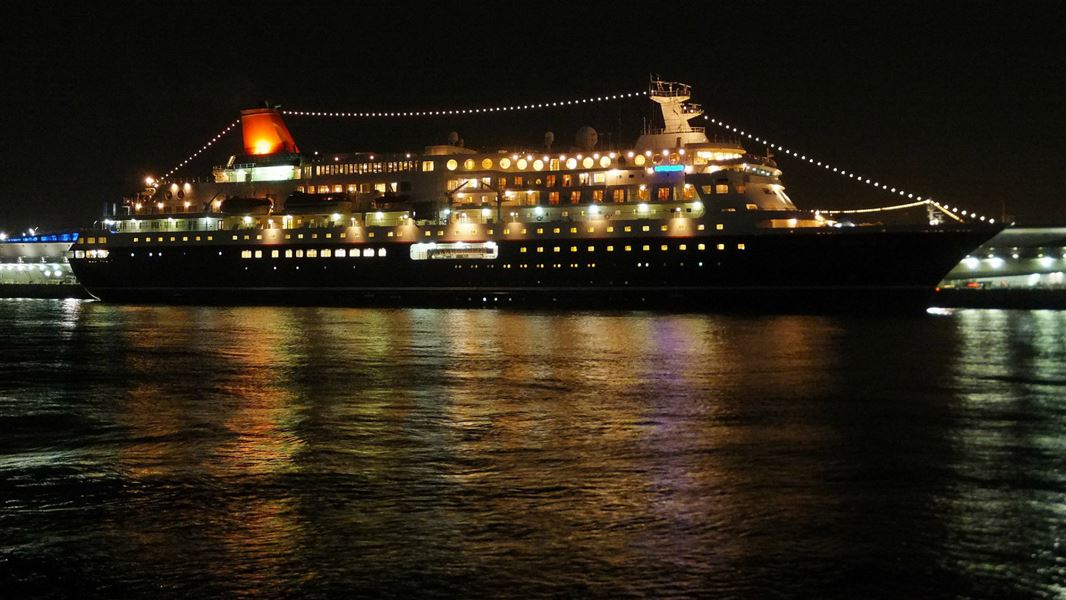Archived content: This media release was accurate on the date of publication.
Date: 22 January 2019
DOC Principal Science Advisor Graeme Taylor says the bright lights attract the seabirds.
“They can be momentarily blinded causing them to fly into a cruise ship and end up lying stunned on the deck.”
DOC is working with the New Zealand Cruise Ship Association and Cruise Lines International Association (CLIA) to reduce the amount of light from cruise ships and advise crews on what to do when dazzled birds land on their ships.
“Bright lights on cruise ships is an issue in the Hauraki Gulf because we have a high number of seabird species that fly at night,” says Graeme Taylor.
“This includes mature seabirds foraging for food and young birds departing from their breeding colonies on their first trip to sea.”
“These seabirds have better night vision than humans. But this means they’re more likely to be dazzled by a cruise ship’s lights, especially on foggy overcast nights with no moonlight. Young seabirds are most at risk of crash landing on a ship at night.”
To keep the seabirds and passengers safe, DOC has developed an advice sheet for crews on cruise ships.
“We’re providing practical advice on ways to reduce the amount of light shining out to sea from cruise ships and how to manage dazzled birds that land on the ships,” says Graeme Taylor.
New Zealand Cruise Association Chief Executive Kevin O’Sullivan says advice sheets have been distributed to cruise ships sailing into New Zealand ports.
“We’re asking environmental officers on large cruise ships and senior officers on smaller ships to manage the issue of safeguarding the night flying seabirds.”
“The feedback we’ve had has been very positive. Officers and crew on cruise ships share their workspace, the ocean, with seabirds and have a genuine commitment to keeping them safe.”
“Preventing dazzled seabirds from crash landing on their decks also helps keep their passengers safe,” says Kevin O’Sullivan.
CLIA Managing Director Australasia Joel Katz said the protection of seabirds and other wildlife was an important priority for cruise lines.
“The cruise industry has a strong interest in safeguarding the oceans, wildlife and natural environment that our guests come to enjoy, and the advice of the DOC will be of great assistance to cruise lines as they work to minimise risks for New Zealand’s seabirds,” Mr Katz said.
Hauraki Gulf seabird species at risk from bright cruise ship lights
- Adult New Zealand storm petrels, prions and diving petrels are flying at night year-round foraging for food.
- Fledgling chicks of these seabird species leave their nests at night during the following months
- Common diving petrel / kukaka: Nov – Jan
- Little shearwater: Nov – Jan
- Grey-faced petrel / oi: Dec – Jan
- Fairy prion / tītī wainui: Jan–Feb
- Fluttering shearwater / pakahā: Jan – Feb
- White-faced storm petrel / takahikare-moana: Feb – March
- Cooks petrel / tītī: March – April
- Pycroft’s petrel / tāiko: March – April
- Black Petrel / tāiko: April – June
- New Zealand storm petrel: May – June
- Bullers shearwater / rako: May
- Flesh-footed shearwater / toanui: May
Advice about seabirds landing on ships
Contact
For media enquiries contact:
Email: media@doc.govt.nz
New Zealand Cruise Association
Mobile: +64 21 784 968
